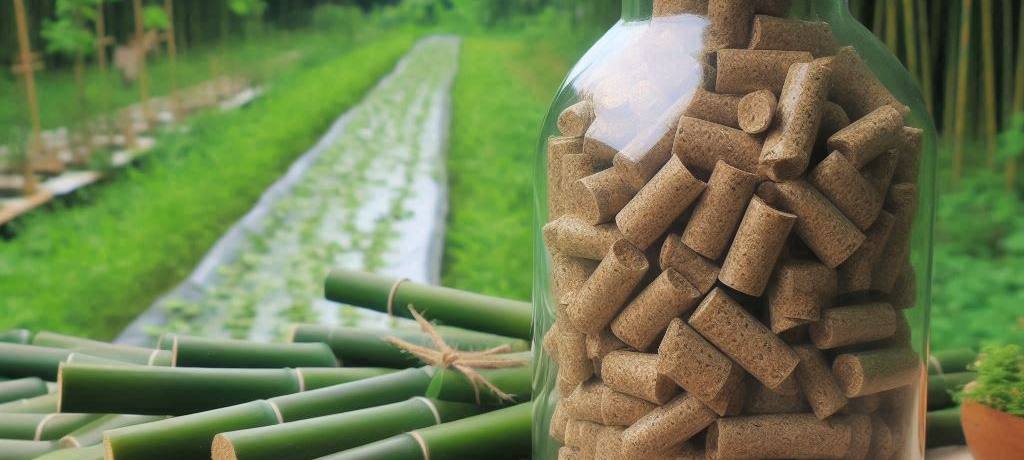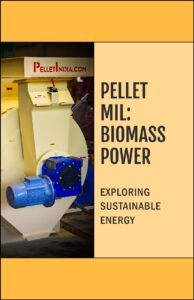
❓ What is the potential of bamboo cultivation in India for pellet and chip production?
🌿 Bamboo Cultivation & Chips – Pellet Production Potential in India
📌 Key Bamboo-Bearing States & Their Contributions
1️⃣ Madhya Pradesh 🏞️
- 📏 Bamboo Area: 1.84 million hectares
- 🎍 Species: Bambusa, Dendrocalamus
- 🏭 Uses: Paper, furniture, crafts
- 🌱 Sustainability: Community-driven eco-friendly initiatives
2️⃣ Arunachal Pradesh 🌄
- 📏 Bamboo Area: 1.51 million hectares
- 🎋 Diversity: 27 species (14% of India’s supply)
- 🏗️ Uses: Construction, crafts, eco-tourism
3️⃣ Maharashtra 🌅
- 📏 Bamboo Area: 1.59 million hectares
- 🏭 Industry Focus: Activated carbon, flooring materials
- 🌳 Green Expansion: Increasing bamboo plantations for employment
4️⃣ Odisha 🏝️
- 📏 Bamboo Area: 1.21 million hectares
- 🎍 Species Variety: Climate-suitable bamboo species
- 💼 Economic Role: Major hub for bamboo-based industries
5️⃣ Assam 🍃
- 📏 Bamboo Area: 1.07 million hectares
- 🏠 Cultural Use: Traditional Chang Ghars, paper industries
- ✅ Sustainability: Selective harvesting ensures regrowth
6️⃣ Gujarat 🌾
- 📏 Bamboo Area: 354,400 hectares
- 🚜 Agriculture: Known for cotton, tobacco, mangoes
- 🌱 Potential: Expanding bamboo cultivation for biomass
🔥 Energy Value of Bamboo Pellets
- Gross Calorific Value (GCV): 4,000-4,800 kcal/kg ⚡
- Ash Content: 2-5% (low maintenance in combustion systems)
- Bulk Density: 600-750 kg/m³ 📦
- High Volatile Matter: 70-75% (easy ignition) 🔥
🌱 Top Indian Bamboo Varieties for Pellet & Chip Production
1️⃣ Bambusa Tulda (Sal Bans)
- 🌍 Regions: Northeast, West Bengal, Odisha
- 🚀 Growth: 3-4 years, 10-15m height
- 🔥 Ideal for biofuel due to high cellulose content
2️⃣ Dendrocalamus Strictus (Thos Bans)
- 🌍 Regions: Central & North India
- 🎋 Yield: 8-10 tons/hectare/year
- 🔥 Low lignin, high cellulose = great for pelletizing
3️⃣ Bambusa Balcooa (Balukua Bans)
- 🌍 Regions: Eastern & Southern India
- 🚀 Fast-growing (3-4 years), 15-25m tall
- 🔥 High biomass yield & low ash
4️⃣ Bambusa Nutans (Nutans Bans)
- 🌍 Regions: Northeast, Central India
- 🚀 Yield: 10-12 tons/hectare/year
- 🔥 High calorific value = better combustion
5️⃣ Dendrocalamus Asper (Vishal Bans)
- 🌍 Regions: Kerala, Karnataka, Tamil Nadu
- 🎋 Large Size: 20-30m height, 10-20cm diameter
- 🔥 Excellent for large-scale biomass processing
6️⃣ Melocanna Baccifera (Muli Bans)
- 🌍 Regions: Northeast India
- 🚀 Fastest-growing (3-4 years)
- 🔥 Low ash, low silica, high biomass potential
7️⃣ Bambusa Vulgaris (Sadharan Bans)
- 🌍 Regions: Widespread in India
- 🚀 10-15 tons/hectare/year yield
- 🔥 Good calorific value, widely used in pelletizing
📊 Daily Bamboo Pellet Production Potential by State 🌿🔥
Here’s a detailed breakdown of bamboo pellet production potential across key Indian states, considering bamboo coverage, annual yield, daily output, and pellet conversion efficiency (90%).
1️⃣ Madhya Pradesh 🏞️
- 🎋 Bamboo Area: 1.84 million hectares
- 📦 Annual Yield: 18.4 million tons
- 🔄 Daily Yield: ~50,411 tons/day
- 🔥 Daily Pellet Production: ~45,370 tons/day
2️⃣ Arunachal Pradesh 🌄
- 🎋 Bamboo Area: 1.51 million hectares
- 📦 Annual Yield: 15.1 million tons
- 🔄 Daily Yield: ~41,370 tons/day
- 🔥 Daily Pellet Production: ~37,233 tons/day
3️⃣ Maharashtra 🌅
- 🎋 Bamboo Area: 1.59 million hectares
- 📦 Annual Yield: 15.9 million tons
- 🔄 Daily Yield: ~43,562 tons/day
- 🔥 Daily Pellet Production: ~39,206 tons/day
4️⃣ Odisha 🏝️
- 🎋 Bamboo Area: 1.21 million hectares
- 📦 Annual Yield: 12.1 million tons
- 🔄 Daily Yield: ~33,151 tons/day
- 🔥 Daily Pellet Production: ~29,836 tons/day
5️⃣ Assam 🍃
- 🎋 Bamboo Area: 1.07 million hectares
- 📦 Annual Yield: 10.7 million tons
- 🔄 Daily Yield: ~29,315 tons/day
- 🔥 Daily Pellet Production: ~26,383 tons/day
6️⃣ Gujarat 🌾
- 🎋 Bamboo Area: 354,400 hectares
- 📦 Annual Yield: 3.54 million tons
- 🔄 Daily Yield: ~9,717 tons/day
- 🔥 Daily Pellet Production: ~8,745 tons/day
💡 Key Takeaways

✅ Madhya Pradesh has the highest bamboo pellet potential, followed by Arunachal Pradesh and Maharashtra.
✅ Odisha and Assam have moderate production potential, supporting small to medium-scale pellet industries.
✅ Gujarat has a lower bamboo resource but can expand bamboo-based biomass production in the future.
✅ Bamboo pellets offer a sustainable alternative to coal and fossil fuels, reducing carbon footprint and promoting green energy.
🎯 Advantages of Bamboo Pellets
✅ Eco-Friendly & Renewable 🌍
✅ High Energy Density 🔥
✅ Sustainable & Fast Regenerating 🌱
✅ Low Ash = Less Maintenance 🏭
✅ Supports Rural Employment 👨🌾
🔗 For more details, visit: 🌐 www.bamboopellet.in | www.napiergrass.in
🚀 Need expert consultation? Contact Servoday Plants & Equipments Limited
📞 +91 9427210483 | +91 9427210484 | ✉️ [email protected]

❓ What is the calorific value of bamboo pellets?
❓ Which states in India have the highest bamboo reserves?
❓ How much bamboo is grown in Madhya Pradesh per year?
❓ What are the economic benefits of bamboo-based biofuels?
❓ What is the moisture content of different bamboo species?
❓ How much bamboo is required to produce 1 ton of pellets?
❓ Why is bamboo a sustainable biofuel alternative?
❓ Which bamboo variety has the highest biomass yield?
